
A deck skirt can improve the form and function of a deck. Find out what it could cost to install deck skirting in your backyard with this guide.
Plan ahead so you can properly enjoy your deck when the weather is warmer


Winter is a surprisingly ideal time to build a new deck.
Contractors’ schedules are more available during the winter months.
Heat damage to the wood during installation is minimal.
You can potentially save money on labor and materials.
When snow is piling up outside during the winter months, many people are thinking about snuggling up with hot cocoa. But, staring out at all that unused space in your backyard, you might wonder, “Can you build a deck in the winter?” Absolutely.
While building a deck during the winter might feel counterintuitive, it’s the perfect season to get your project started. Check out these reasons why the cold-weather months may be the best time to build a deck.
A lot of planning has to go into building a deck. Here are some factors that can influence timing, budget, and overall project success.
Your overall climate zone will affect when you should build a deck. Ideally, you should build your deck during a season with little sunlight, medium humidity, minimal wind, and low precipitation, but this will vary from one location to another. If you live in the far north, and winter means frozen soil, building a deck at this time may not be possible. Similarly, building during the rainy season is a bad idea. On the other hand, in areas with dry, hot summers and mild winters, wood may warp during the summer, making winter the perfect season to build a deck.
Beyond the overall climate, day-to-day weather fluctuations can affect your deck build. Building during a blizzard, thunderstorm, or hurricane would be a bad idea, but even smaller weather events can affect your build. Too much or too little humidity can affect your wood or stain. Similarly, soggy soil after a rain storm or snow thaw can make installing supports for a deck difficult. Excessive mud makes it hard to stain, paint, or seal a deck since the surface must be clean.
The optimal time to build is a windless, cloudy day that’s not too hot or cold. After finding the best season for a deck build, keep an eye on the immediate weather in your area to know the best time to meet these conditions. Allow extra time for your build timeline to account for weather delays.
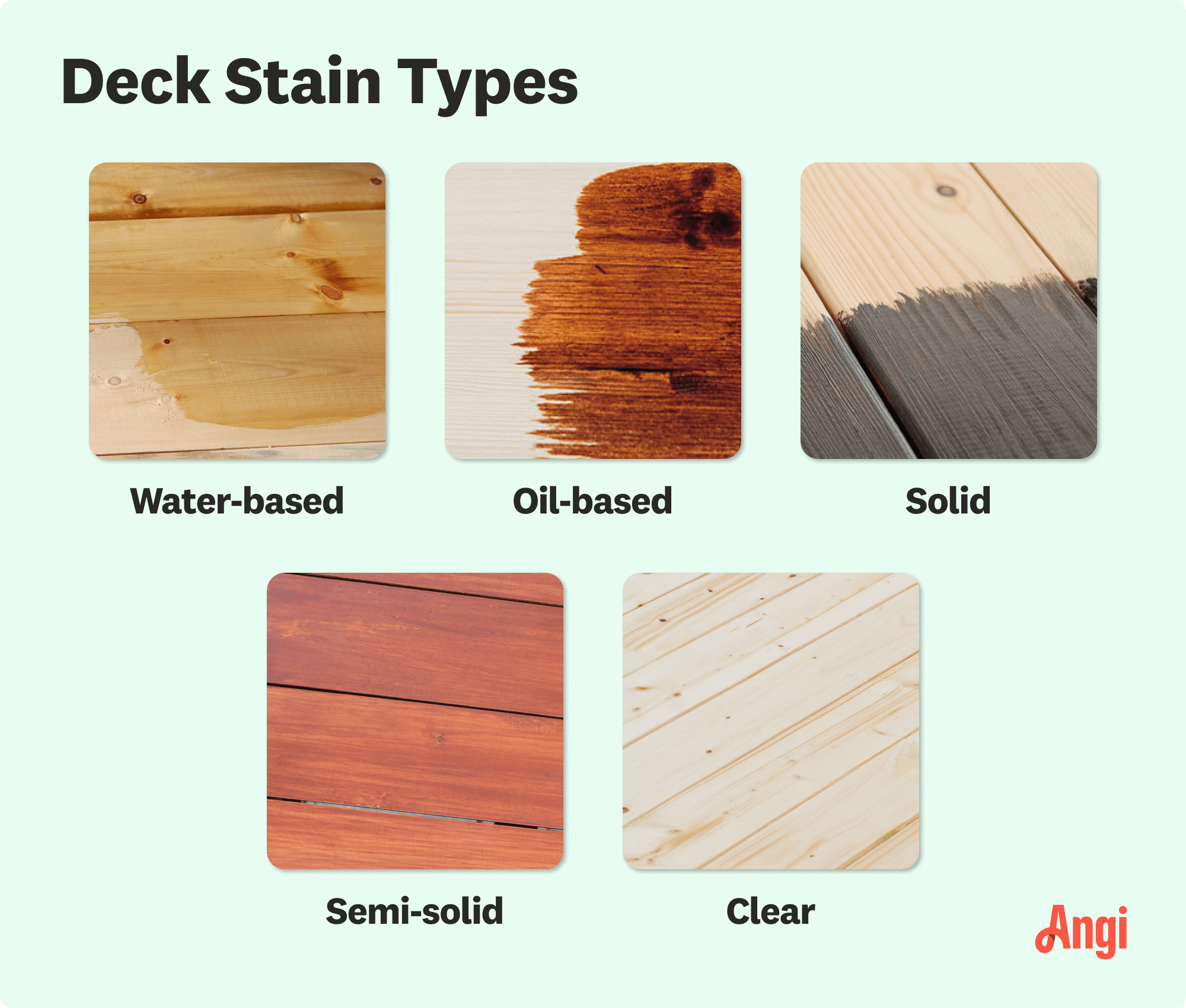
Stain requires evaporation to dry. However, it dries too quickly in environments that are too dry or hot, so it doesn’t have time to fully penetrate the wood before evaporating. Arid weather or direct sunlight can leave the stain cracking, streaky, or uneven. On the other hand, too much humidity in the air can take too long to cure, resulting in poor adhesion or debris landing in the wet stain.
Similarly, paint doesn’t adhere properly when applied in excessively hot or cold temperatures. Improper adhesion reduces the paint’s lifespan and may cause it to flake or peel more quickly.
For best results, only apply stain on days with a temperature between 35 and 70 degrees Fahrenheit and reserve painting for days between 50 and 85 degrees. The ideal humidity for staining is 40% to 60% or up to 70% for paint.
When building with wood, you have to be extra mindful of your environment, especially seasonal temperatures. During the summer, hot, dry weather causes wood to contract, which could result in warping, making alignment difficult even for professionals.
Aluminum, PVC, and composite decking aren’t affected by weather, and they don’t require paint or stain.
Building your deck in winter rather than the summer could benefit you for many reasons. Ultimately, whether it is a good idea to build a deck in winter comes down to your needs and your climate.
Building your deck during the winter months can save you money on labor and material costs. You could save on labor costs because contractors in your area will likely have fewer jobs. As a result, they may quote you a lower rate to build your deck than they would during warmer weather.
Another perk of building your deck in the winter is contractor availability. The best contractors in your area might not be able to immediately start a job for you during the spring or summer because they’re in high demand. However, during the off-season, you’re more likely to hire a local deck builder and start your project with less lag time.
That isn’t to say that the contractor will be able to get the job done faster in the winter once they get it started. Delays and work stoppages could still arise depending on what that winter weather is doing—building a deck during a week-long blizzard, for example, isn’t likely.
Not sure what type of deck is right for you? Reach out to a pro. After all, it doesn't cost anything to talk to an expert to get a quick opinion on the best options for you given your location and situation.
While wood is one of the more common materials used to make decks, the three-digit temperatures during the summer can damage it. Why? The sun’s heat can warp the wood, making it difficult for even the most seasoned contractors to align properly, especially if the wood has been sitting out.
In the winter, the cold temps keep the wood from expanding, making it easier to install. Of course, keep in mind that this doesn’t apply if you’ve selected another material for your deck. Non-wood long-lasting deck materials include PVC (polyvinyl chloride), aluminum, or composite decking. Since they aren’t made entirely of wood (or in the case of PVC, no wood at all), they don’t warp the same way wood planks for decks do.
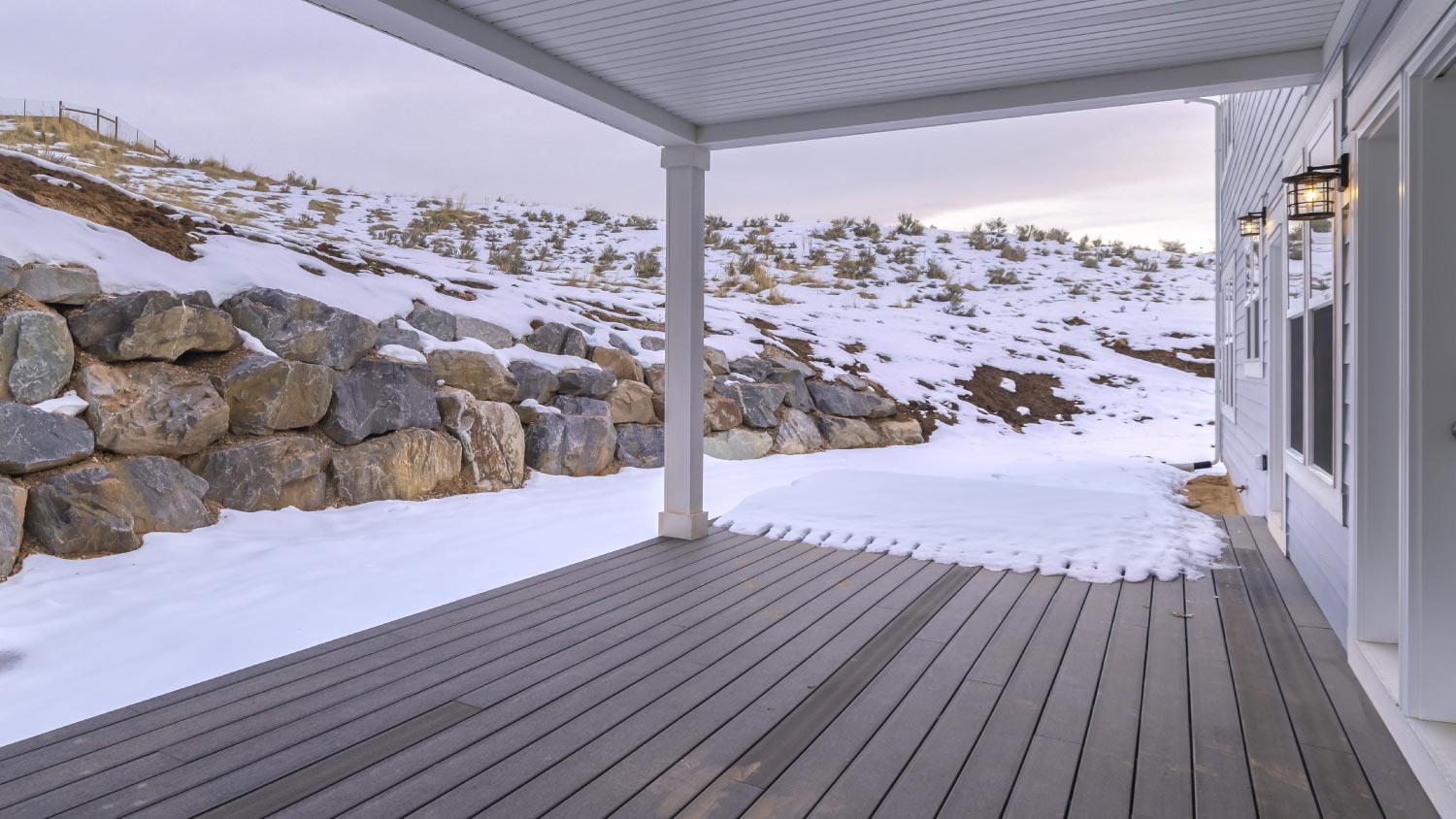
A good reason to build your deck during the winter? Just like you don’t want to spend time out there, neither will the rest of your family. Building your deck in the winter means that you don’t need to schedule your outdoor activities (like parties and BBQs) around the construction schedule. Plus, if the build goes according to plan, it’ll be complete by the time it’s warm enough to grill again.
What do your new deck and smoked meat have in common? They both need to cure! Even if you’ve chosen composite or aluminum instead of wood for your new deck, it still has a wooden base and wooden feet.
The wood used for this part of your deck is pressure-treated lumber. That means a mixture of water and preserving agents were injected into this wood using pressure so your natural wood can live a long and happy life without prematurely warping, rotting, or cracking.
Your deck’s cure time is how long it takes for the moisture that remains in these boards to evaporate. Winter is a great time to accomplish this task because of the lack of humidity. When you build your deck in winter, it has the ideal conditions it needs to cure effectively.
The perk of staining a wooden deck in the winter is the dry air that allows for the color to reach its full potential without the threat of streaking or cracking that may be present in more humid seasons like spring or summer.
As mentioned above, wood tends to soak up moisture from the air, which can cause cracking and peeling in the stain if you apply it in warmer temperatures. If you live in a particularly warm climate, the hot air can even speed up the dry time of the stain, which can cause unwanted streaking or leave watermarks.
Building a deck, especially one with a big footprint, can lead to a team of contractors in your yard for several days, if not longer. The more foot traffic in your yard, the more likely your grass or landscaping will suffer the consequences.
However, your yard is less likely to be affected by the increased foot traffic during the winter, especially if there’s ice or snow on the ground, which can act as a barrier between workers and your precious turf. A firm ground with dormant grass in the winter will mean you won’t have as much damage to correct once spring or summer rolls around.
Whether you like to have the occasional cocktail outside or entertain the masses in your backyard, a major upside to building a deck in the winter is the ability to use it as soon as the flowers bloom and the cold melts away. Your deck will be primed and ready for weeknight bonfires, grilling season, and other occasions that utilize your outdoor entertaining space. Plus, once the deck is complete, you’ll have more time to furnish it and adorn it with all of the elements that will make it more magical, such as string lights, Adirondack chairs, or a new smoker.
Building a deck costs $30 to $60 per square foot. The average cost comes out to around $8,200, but prices can range from $1,500 to over $20,000. The main factors affecting the overall cost are the size of the deck, the design, and the materials. Expect to pay more for complex designs, like multi-story and wrap-around layouts, or for high-quality materials like redwood, composite, or aluminum.
Building a deck is a massive, complex, and time-consuming project. It takes a level of expertise few amateurs have, and if you make a mistake, your deck could be dangerous. Hiring someone to fix an improperly installed deck could cost just as much as hiring a pro to do the job in the first place. Beyond that, hiring an expert to build your deck can make the process faster and save you from a lot of back-breaking work.
From average costs to expert advice, get all the answers you need to get your job done.

A deck skirt can improve the form and function of a deck. Find out what it could cost to install deck skirting in your backyard with this guide.
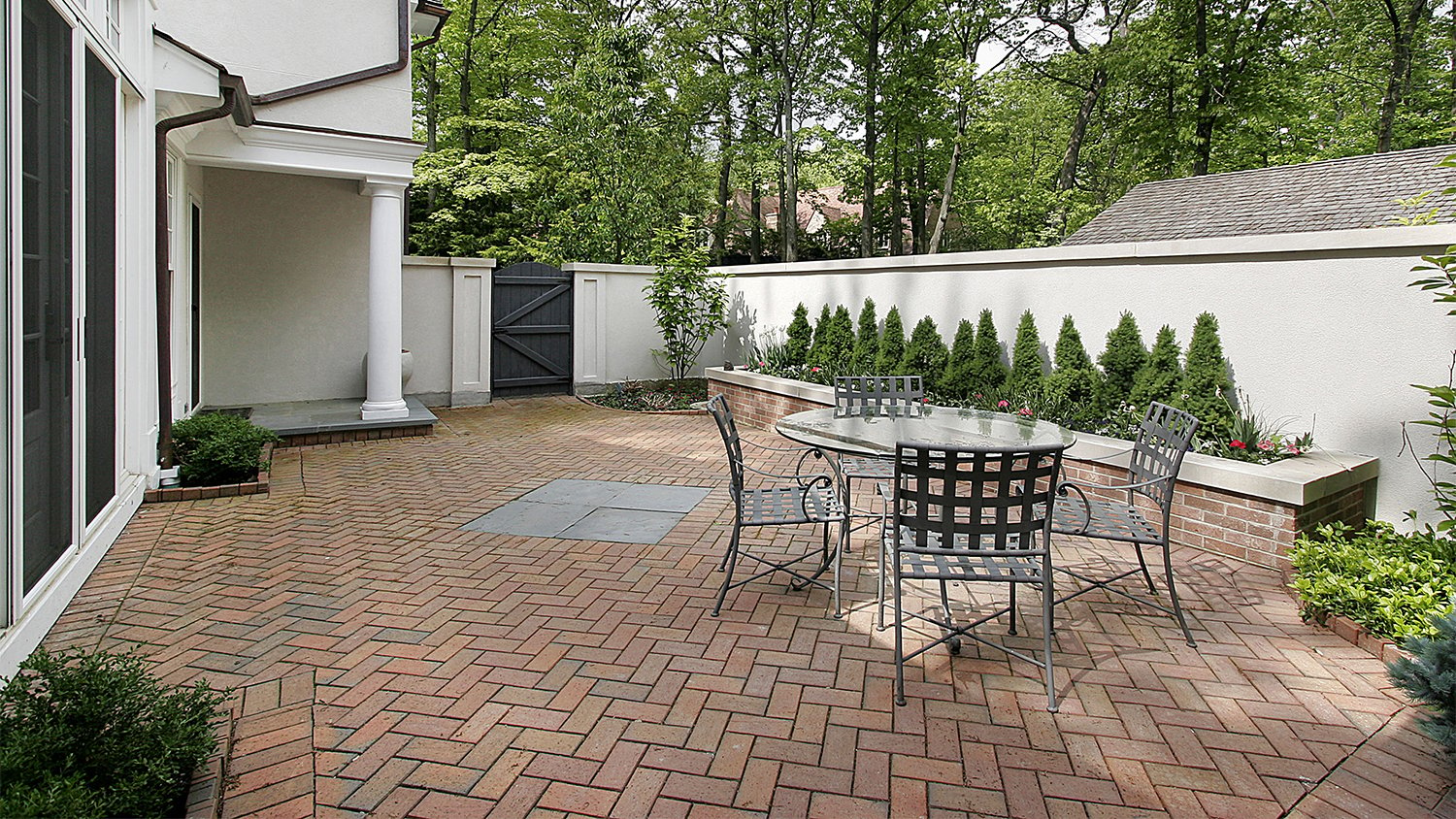
Looking to spruce up your outdoor entertaining area? Learn how much it costs to seal pavers and what factors to consider when estimating your total.
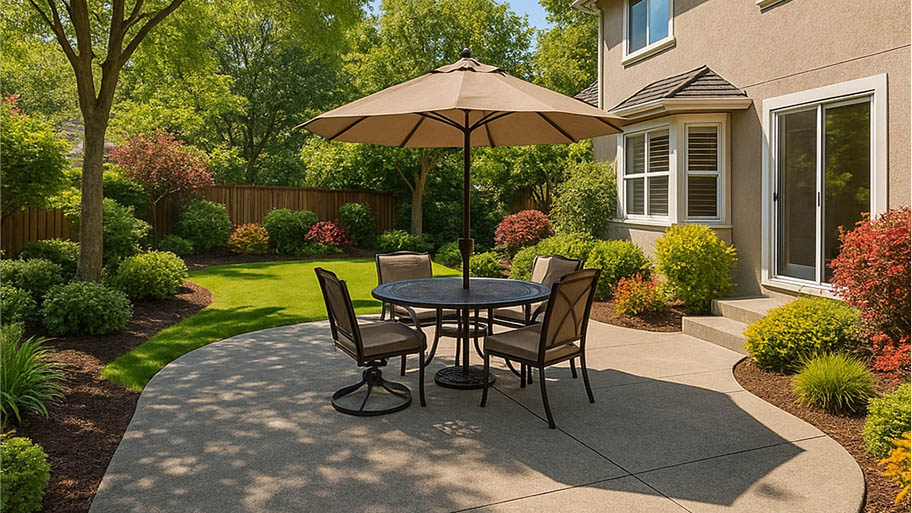
A concrete patio adds valuable outdoor living space to your home. Learn how much a concrete patio costs and which factors affect the project price.

Composite decking is made of synthetic and natural materials and tends to last longer than wood. Learn what composite decking is and its pros and cons.
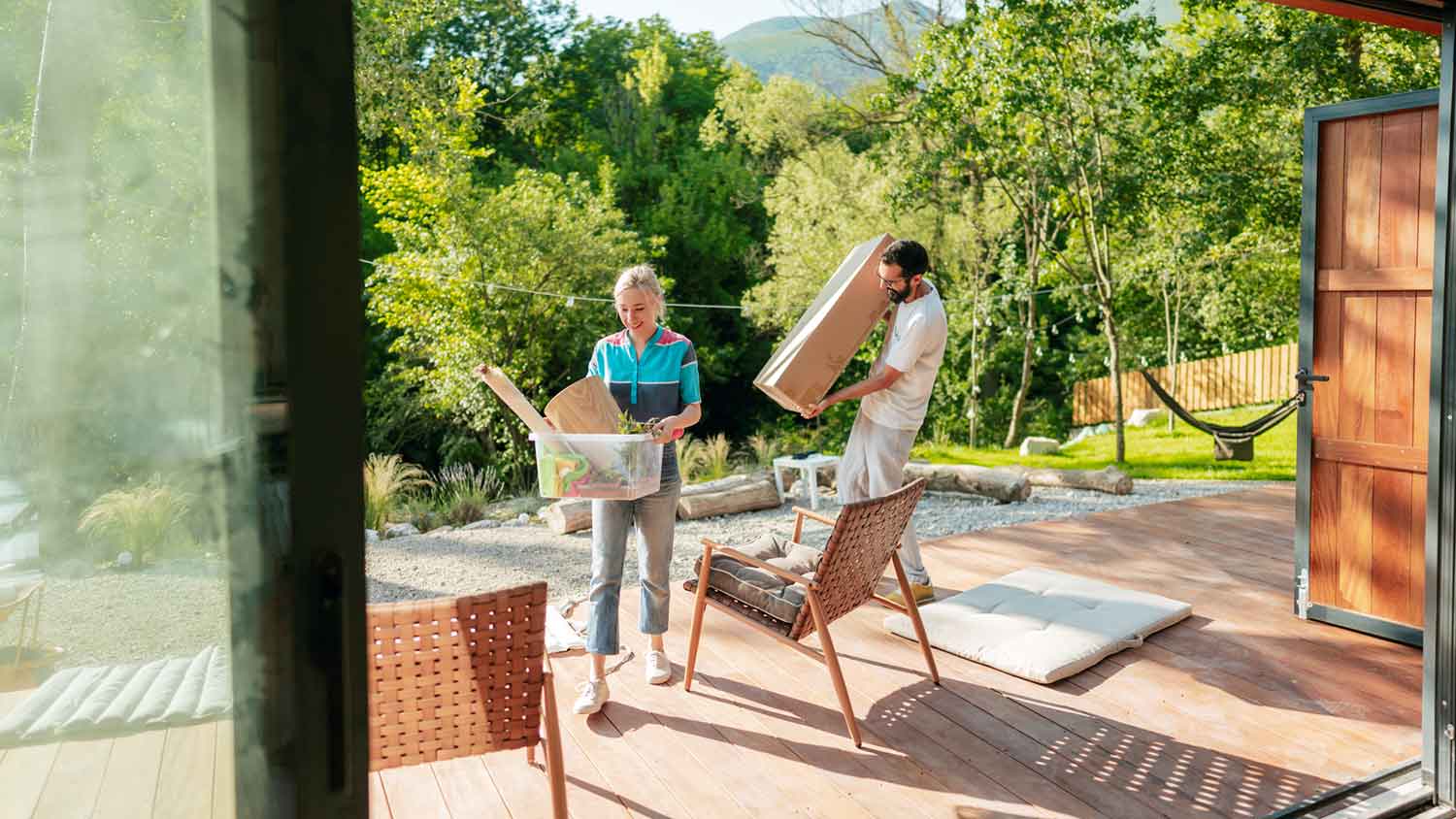
Learn how to winterize a patio to protect your outdoor space from cold temperatures and prep for the start of spring.

Ready to create your perfect outdoor space? Our guide walks you through building a brick patio, from planning to laying the last brick.